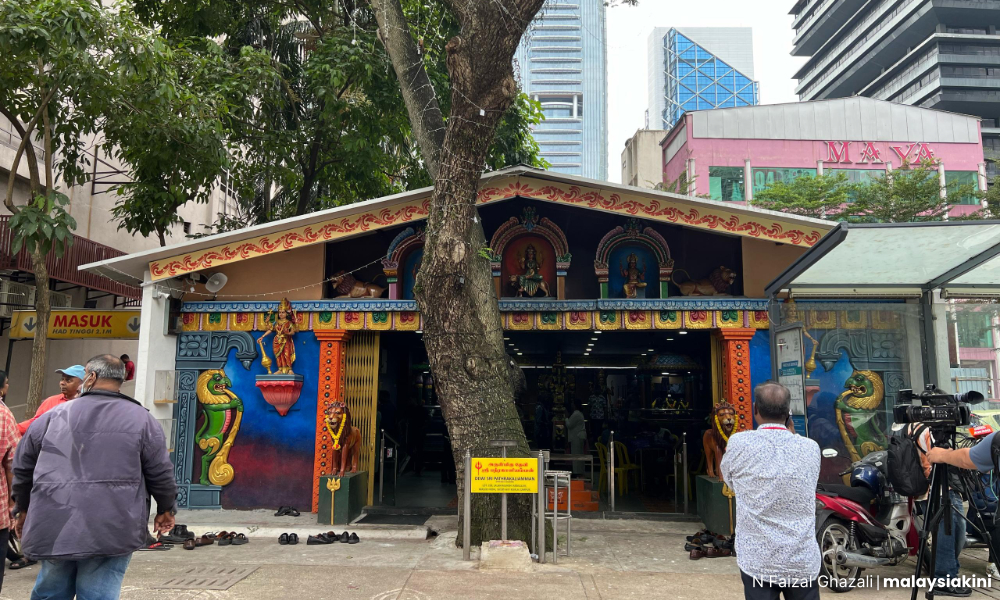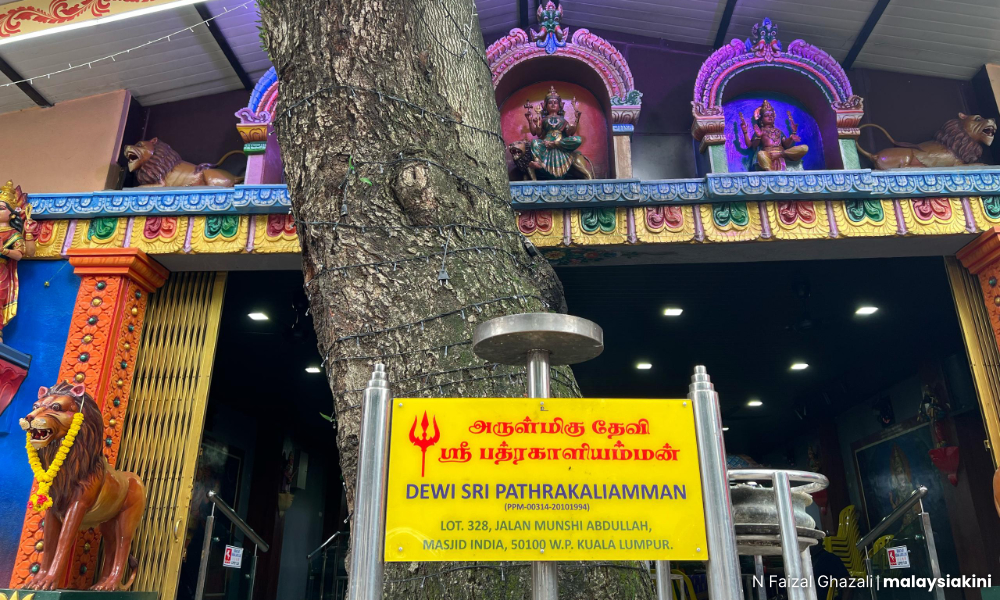Malaysian Advancement Party (MAP) president P Waytha Moorthy called on Prime Minister Anwar Ibrahim to convene a special cabinet meeting following the controversy surrounding the Dewi Sri Pathrakaliamman Temple in Kuala Lumpur.
Referencing Anwar’s speech on March 15, he emphasised the need for complete transparency and to dispel false narratives, half-truths and concealment of facts surrounding this issue.
He said the special meeting should address several critical questions and take the necessary steps to make public the historical records and facts surrounding the migration policies adopted by the then-ruling British government, who acted as advisers to the various sultans.
“The following questions are pertinent not only to the Sri Pathrakaliamman temple but also to the broader issue of Hindu temples across Malaysia and understanding the larger cultural and religious practice brought by Indians who were encouraged to migrate to Malaya in large numbers in the mid-1800s onwards.
“A thorough examination of these matters will provide a comprehensive and lasting resolution to the problems we often face,” Waytha (above) added in an open letter to the prime minister.
12 areas outlined
The Hindraf leader outlined 12 areas, which are:
1. Historical context: The historical background of the migration of the Tamil and South Indian population to various states under British rule, where British Residents advised the respective sultans, must be examined.
This includes the policies adopted by these Residents, the Resident General (following the formation of federated and unfederated states), to encourage the migration of the Indian labour class. These policies were designed to ensure their permanent settlement in the future Malaya to support rubber and agricultural plantations and the construction of roads, railways, and government buildings.

A critical aspect of this examination is to understand whether the establishment of temples was encouraged by the British administration to create an environment reminiscent of South India, thereby facilitating their settlement and serving the economic interests of the British administration.
2. Early laws and rules: Were there specific rules or laws governing the migration and construction of places of worship during the British colonial period?
3. Evolution of policies: How did these rules and laws evolve from the mid-1800s to the mid-1900s?
4. Straits settlements: What policies were adopted in Penang and Malacca regarding the Indian community and their places of worship?
5. Post-independence repatriation: Whether there were questions raised to address the repatriation of nearly one million Indians by 1957 must be examined. Many of these individuals were third- and fourth-generation Malayan Indians born in Malaya who had never set foot outside the country.
Their deep roots in Malaya raise critical questions about the practicality of such repatriation policies, particularly in light of their significant and continuing contributions to the nation's development and economy.
It is crucial to highlight the economic contributions of this community to the Malayan financial coffers and to question whether their continued existence in Malaya was needed to maintain monetary stability.
6. Recognition of temples: How were existing Hindu temples, built with the permission of the British administration formally recognised upon Malaya achieving independence?
7. Merdeka Constitutional Conference: Were the issues of temple recognition and the status of the Indian community, as mentioned in points (4), (5) and (6), discussed during the Merdeka Constitutional Conference (1955-1957) or presented to the Reid Constitutional Commission?
8. Post-independence policies: What policies were adopted at the time of independence to address the status of Hindu temples that had existed since the 1800s?
9. Transition to Torrens system: How did adopting the Australian Torrens system and the National Land Code (1965) impact and change the legal status of Hindu temples? What was done by the government to address prevailing complications upon the shift to the Torrens system?
10. Post-1965 policies: What were the government's policies regarding Hindu temples following the implementation of the National Land Code?
11. National Development Plans: How were Hindu temples addressed in the National Development Plans?
12. 13th Malaysia Plan: Has the Malaysian Indian community been included in the previous 12 Malaysia Plans, and are there specific measures to address the long-standing issues of marginalisation of the Indian community in the mainstream development of the country, including issues surrounding Hindu temples?
‘Deliberate on this matter’
Waytha said clear and transparent answers to these questions will provide a permanent and comprehensive resolution to the status of Hindu temples in Malaysia.

“This will not only address the immediate concerns but also restore the dignity and rights of the Hindu community, who have been subjected to degrading terms such as "kuil haram” (illegal temple).
"Such language is deeply hurtful and undermines the principles of co-existence in our unique multi-racial country.
“I urge your Madani government, which includes representatives from BN - a coalition that governed Malaysia for over six decades - to deliberate on these matters with honesty, transparency, and a commitment to justice,” he added. - Mkini



No comments:
Post a Comment
Note: Only a member of this blog may post a comment.